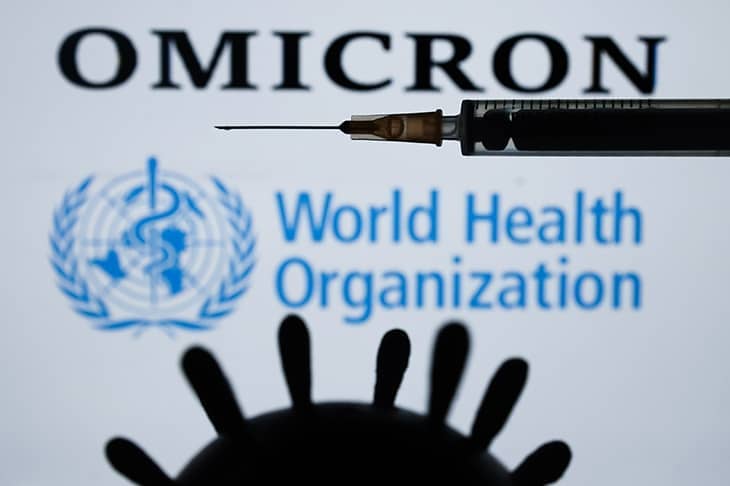‘So you think it’s all over? Ho ho ho!’ That’s the message from Satan’s dark laboratory (twinned with Wuhan’s) where the Omicron variant turns out to have been bubbling in its test tube while we dared to resume our normal lives during the autumn. But whether that ugly little globule ruins Christmas or proves to be largely a scare story, the pandemic’s disruption of business ain’t over yet either: supply chain hold-ups, labour shortages, cost spikes and debt pressures continue apace.
Here, for example, is news that the UK car industry produced fewer than 65,000 cars in October, down 41 per cent on the same month last year and its lowest October output since 1956. Production has declined for four consecutive months, partly thanks to the closure of Honda’s Swindon plant, but chiefly because of the global shortage of microchips which industry chiefs think could last well into 2022.
Likewise shipping logjams: Felixstowe, the UK’s biggest container port, was so congested in October that the Maersk line had to divert vessels for unloading elsewhere in Europe. Movement through Chinese ports is said to have eased, but Los Angeles has huge backlogs. Shipping costs on major routes remain sky-high, though forward rates have dropped, indicating the market expects freer flows of goods in six to 12 months’ time.
Not everything is as haywire as it was earlier in the year. Building timber and wood pulp for packaging are among materials whose prices have dipped as supply and demand return towards balance. But at the same time, the ending of government support schemes has revealed the extent to which balance sheets have been strained: Make UK, a trade body for UK manufacturers, resorted this week to the double cliché of the ‘perfect storm’ and the impending ‘tipping point’, leading to ‘an unprecedented combination of a post-Covid credit, cash and costs crunch’.
Enough alliteration already, you’re thinking, but let me also mention crumbling consumer confidence: down-trending under the sting of inflation plus tax rises ahead, and now frightened by Omicron. The £9 billion we reportedly spent on Black Friday — 15 per cent more than last year, when we were back in lockdown — must be set against the bellwether of shoppers’ footfall in London’s West End, which in the third quarter reached barely more than half its 2019 level.
Where’s this tour d’horizon heading? Rishi Sunak’s Budget soundbite said the UK was on course to deliver its fastest growth rate since 1973: down almost 10 per cent last year, we’ll have regained more than 6 per cent in 2021. Until last week, most pundits were still shooting for another 5 per cent in 2022. With unemployment far below where it might have been, none of this is to be sniffed at. All I’m saying is there’s still an assault course ahead, to which Omicron adds a layer of the uncertainty that markets hate, hence the FTSE’s 300-point wobble last Friday. A star for honesty goes to Huw Pill, new chief economist at the Bank of England, whose rate-rise strategy may also be derailed by the turn of events. ‘We don’t really know what the future holds,’ he said — and, quoting the boxer Mike Tyson, ‘Everybody has a plan until you’re punched in the face.’
Hydrogen is hot
Everyone’s talking about hydrogen. In August, the government unveiled a ‘world-leading’ hydrogen strategy to ‘unlock £4 billion of investment’ in the sector by 2030. Fulfilling part of that promise, BP has plans for a huge ‘green hydrogen’ plant on Teesside (in simple terms, the green version comes from renewable sources whereas ‘blue’ comes from hydrocarbons) to provide fuel for heavy trucks. The digger manufacturer JCB has developed a hydrogen engine as powerful as its existing diesels but emitting only steam, not carbon dioxide. Airbus thinks it could have hydrogen passenger aircraft flying by 2035. Visiting a conference of catering equipment manufacturers in Harrogate this week, I found them earnestly discussing the advent of the hydrogen-powered kitchen, even though there are no such products yet on the market.
Hydrogen is ‘the nirvana of the energy scene,’ one source tells me, because — chef’s gadgets apart — it has the potential to power the trucks, buses, ships and planes that are among today’s worst polluters and unlikely ever to convert to electricity, much of which will in any case continue to be generated by dirty power stations.
How to take a stake in all this? This column’s veteran investor Robin Andrews has been following the field since its earliest days and points out that we first tipped two of its best UK bets in May 2016: Ceres Power’s shares have since multiplied in value more than 100 times (that’s ten times in value after a 10-for-1 consolidation) and ITM Power’s by 18 times. He suggests novice investors might like to explore HydrogenOne (which he holds), a fund dedicated to taking stakes in ‘clean hydrogen’ and related ventures, launched by former Shell and Exxon executives and backed by the chemical giant Ineos; it listed in London in July.
No apology needed
Jamie Dimon — the world’s most powerful banker (per the New York Times) as chief executive of JPMorgan — wasn’t wrong when he said that his bank, which has operated in China since 1921, is likely to last longer than the Chinese Communist party. He was tempting fate when he added, ‘I can’t say that in China: they’re probably listening anyway’ because they almost certainly were, through bugs in the phones of whoever was in the room or by sinister means the West has yet to uncover.
But he really shouldn’t have back-pedalled and apologised as he did afterwards — no doubt to protect JPMorgan’s continuing $20 billion interest in China — because we should hope that decent companies which care for their customers will always outlive rotten regimes that care for no one but their luxuriating elites. You might retort that the latter also describes many banks — but not, I think, JPMorgan under Dimon.







Comments